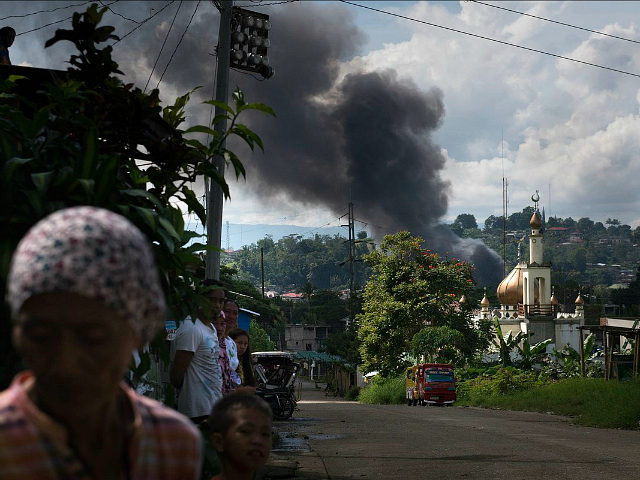While the Philippines is a majority Catholic country, its southern island of Mindanao is home to a separatist Muslim minority known for a decades-long campaign of guerrilla warfare to gain control of the region.
After three years of President Rodrigo Duterte’s policy of intense military attacks on Islamic State affiliates and negotiations with indigenous Muslim separatist groups on Mindanao – his home island – the Philippines documented just two major jihadist attacks in 2020.
Various Islamist militant factions have formed in Mindanao since the late 1960s despite resistance from Philippine government security forces. Mindanao’s most dominant jihadist groups in the past decade have pledged allegiance to Islamic State.
The worst jihadist attack on the Philippines in recent years occurred in 2017 in Marawi City. The assault began on May 23 after Philippine federal forces launched an offensive to capture Isnilon Hapilon, the leader of Abu Sayyaf, an IS-linked terror group based in the southwestern Philippines. Reports indicated that Hapilon was in Marawi City at the time, possibly to meet with leaders of Maute, another regional Islamic State affiliate. Abu Sayyaf forces attacked the Philippine army and police forces sent to capture their leader and reportedly called for reinforcement from Maute.
The clash kicked off a five-month battle between the Islamic State-linked terrorists and government forces as both parties fought for control of the city. The Philippine military ordered airstrikes targeting Abu Sayyaf and Maute positions, while ground forces deployed heavy artillery to shell the groups’ forces. The jihadists resorted to barbaric tactics, including executing captured Christians, in their desperate attempt to take the city. About 1,000 people, including militants, soldiers, and civilians, died in the siege, which the Philippine federal forces ultimately won on October 23. Federal Philippine forces killed Hapilon, known as the Emir of the Islamic State in Southeast Asia, and other Islamist militants by the end of the conflict.
Philippine President Rodrigo Duterte declared Marawi “liberated” from Islamic terrorists by mid-October. The Mindanao native has worked consistently since then to maintain a military presence in Marawi City, with the goal of supporting its rehabilitation and preventing further terror attacks in the region.
The Marawi siege destroyed the city and was the longest urban battle in Philippine history. By comparison, 2020 saw just two attacks from Islamist militants in the Philippines, and only one resulted in casualties.
A group of 50 Islamist militants attacked a Philippine Army battalion camp and a police station in Datu Piang on December 3. Datu Piang is located in the southern Philippine province of Maguindanao.
“Some of the suspects ‘harassed’ the police station in Barangay Poblacion, while the rest created a commotion at the military unit to prevent troops from responding,” Philippine government authorities said of the coordinated attack.
“Soldiers managed to get to the police station, engaging the militants and forcing them to flee. The gunmen burned a police patrol car as they fled, and fired at a nearby church and school,” police said, adding that no casualties were reported from the incident.
The attackers were believed to be members of the Bangsamoro Islamic Freedom Fighters (BIFF), an Islamic separatist group considered a terrorist organization by the Philippine government. BIFF is a breakaway faction of the Moro Islamic Liberation Front (MILF), a Muslim rebel group that signed a peace agreement with the Philippine government in March 2014. BIFF pledged allegiance to Islamic State less than six months later.
Armed Forces of the Philippines Chief of Staff Gen. Gilbert Gapay condemned the December 3 attack in Datu Piang as an “act of terror,” but stressed that it should not be compared to the siege of Marawi City in 2017 by local and foreign terrorists.
Both Datu Piang and Marawi City are located in the Bangsamoro Autonomous Region in Muslim Mindanao (BARMM), established in 2019 after decades of attacks by Muslim separatist groups in the southwestern Philippines
Two female Islamic State terrorists carried out twin suicide bombings in Jolo, located in the BARMM province of Sulu, on August 24, four months before the Datu Piang attack. The bombings killed 14 people, including Philippine soldiers, and injured roughly 75 others.
The first explosion occurred “near two parked army trucks in front of a grocery store and computer shop in a downtown plaza where the town cathedral is located,” according to Philippine military officials.
In the second explosion “the attacker blew herself up near a group of soldiers and police, killing one soldier and one police commando and wounding several others,” a military report stated.
Philippine government authorities believe the attacks were perpetrated by members of the Islamic State-affiliated Abu Sayyaf. Both the Philippines and the U.S. have designated Abu Sayyaf a terror organization for committing bombings, beheadings, and ransom kidnappings across the southwestern Philippines over the past several years.
“Abu Sayyaf militants may have staged the suicide bombings to avenge the death of a Filipino leader of the Islamic State group in the southern Philippines following a clash with troops last month,” Philippine Army commanding general Cirilito Sobejana said on August 25.

COMMENTS
Please let us know if you're having issues with commenting.